Facing panels for the facade of the house: brick, stone, timber
Facade decoration is one of the most important activities. It determines not only the appearance, but also the operational characteristics of the building. One of the ways to quickly and efficiently cope with the task is to use facade panels for exterior decoration of the house. They are different, from different materials with different characteristics and appearance.
The content of the article
Types of facade panels
Facade panels for exterior decoration of the house are a solid group of materials with different technical characteristics, made from different materials. To choose, one must at least roughly represent their appearance, features and properties.
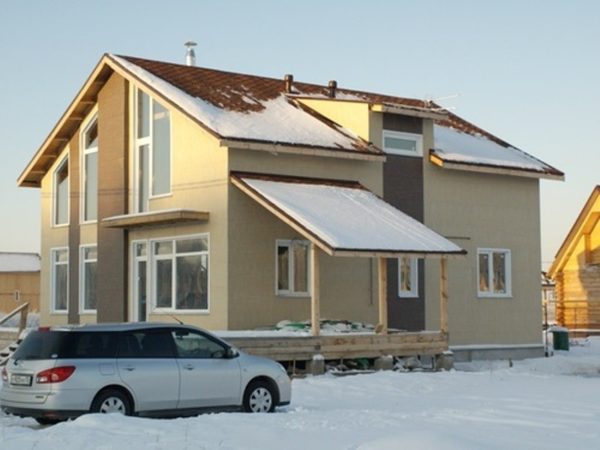
In appearance, it is difficult to say which facade panels for the exterior of the house were used this time
For finishing the facades of private houses
Not all facade panels are used for cladding private houses. The point is not that "it is impossible", but that they do not fit, and, moreover, almost all in appearance. Another reason is the complexity of installation and high cost. Today you can find the following facade panels for the exterior of the house of different types. We list all of them below.
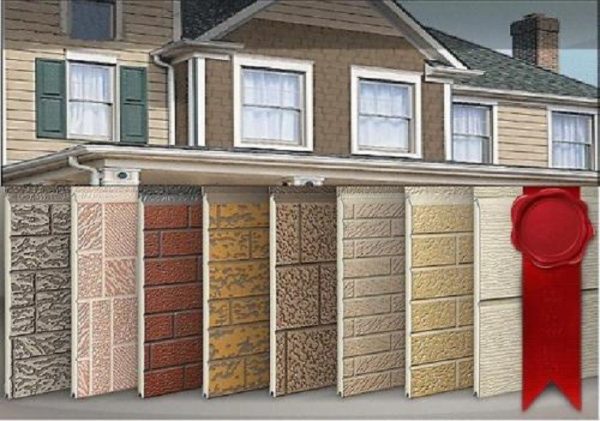
To choose which facade panels to decorate the house, you need to have an idea of their advantages and disadvantages
Facade siding
A well-known finishing material in the form of long strips mounted on a frame. There are traditional options painted in one of the colors, there is imitation of timber, logs, brickwork.
This is the most affordable material for decorating the facade of a house, but it is too thin, has a low resistance to mechanical damage. Another nuance - the sunny side fades, and not everyone likes the appearance.
Basement siding
Basement siding is also made of polymers - PVC (vinyl), polypropylene. It is produced in the form of rectangular panels, some with locks along the edges. Basically, they imitate brickwork of different colors and textures, wild or faceted stone.
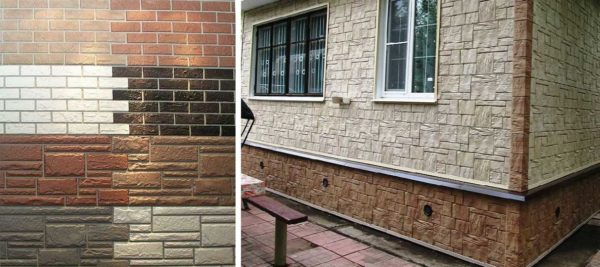
Basement siding is made from polymers. The cheapest - made of polyvinyl chloride (PVC) and polypropylene
The mass from which the basement facade panels are formed is colored in mass, therefore scratches and other damages do not differ from the front surface. They differ from facade siding not only in shape and price (more expensive), but also in greater thickness (20-30 mm, versus 15 mm) and a more believable imitation of stone or brick.
Fiber cement facade panels for exterior home decoration
Fiber cement is an environmentally friendly material that is obtained from a mixture of fibers (small synthetic fibers) and cement. Planks or slabs are formed from the mass, after which they are painted. They were invented in Japan, therefore they are also called "Japanese facade slabs".
Disadvantages - large mass and color of the surface layer (a cement base is visible on deep chips). Advantage - the material does not burn and does not support combustion. If we talk about the price, then Japanese slabs are expensive, but there are analogues of Chinese and domestic production with more loyal prices. Chinese, A-Vent groups, by the way, are of good quality. The company has been on the market for a long time, reviews are mostly good.
WPC (wood-polymer composite)
The wood, ground to fibers, is mixed with a liquid polymer, and a dye is added. From the resulting mass, plates or boards (lining, planken) are formed. This material is used not only for finishing facades, it is used for flooring near the pool, in the gazebo, on the open veranda.
In appearance, and even in tactile sensations, the wood-polymer composite is very similar to wood. The difference is that these "boards" do not need to be painted or varnished. They retain their original appearance for a long time. The disadvantage is the considerable weight and high price. But they are durable, as they are colored in the mass, chips and damage (if any) are not visible.
Porcelain stoneware
The appearance of this material is known to everyone, since a thinner variety is used for flooring. Facade porcelain stoneware is characterized by greater thickness and dimensions.
Facade cladding with porcelain stoneware has serious disadvantages: heavy weight, complexity of cutting and installation, which entails a high cost of installation work. And this is a plus to the fact that the material itself is far from cheap. The disadvantages can also be attributed to an overly pompous look, so the architecture must be appropriate. And so, the decoration of the house with ceramic granite facade slabs is beautiful, durable, resistant to the effects of climatic factors.
Clinker facade panels
It is a multi-layer material. A layer of insulation (expanded polystyrene) is glued to the OSB layer (there is not always), and a thin clinker tile is glued to it. There is an option only from expanded polystyrene and clinker. It is produced in the form of rectangular blocks with jagged edges.
The material is not cheap, but at the same time durable and attractive in appearance. In addition, thermal insulation characteristics are improved at the same time as finishing. This is the only material that goes along with the insulation, which is why it is also called facade thermal panels.
So which is better?
It is impossible to say unequivocally which of the listed materials is better. In appearance, many of them are similar, although there are exceptions. For example, porcelain stoneware or facade siding can hardly be confused with anything. But all the rest have a similar flourishing. So in this matter you have to focus on your own preferences.
As for the operational properties, there are no obvious favorites either. All have features and disadvantages. So according to these parameters, you have to select facade panels for the exterior of the house, depending on the properties of the material from which the house is built and the need for heat / wind / sound insulation.
For example, it is better to finish vapor-permeable walls without foam. It does not conduct moisture. Absolutely. In this regard, the use of clinker thermal panels is undesirable. No, you can add vapor barrier material from the inside. The vapor barrier will block the access of moisture inside the wall, everything will be fine with finishing. But moisture will remain indoors. Removing it requires a powerful ventilation system, and installing it is expensive. And it must be designed at the stage of designing a house. So, thermal panels can be used on houses made of wood or aerated concrete only if they are installed on the crate. No direct wall mounting.
If we talk about the cost. Of all the listed, the cheapest finishing method is facade siding. Next in price are basement siding, fiber cement boards and WPC. And the most expensive ones are porcelain stoneware and clinker facade panels.
For the design of industrial buildings and offices
In this section, we list the facade panels that are most often used to decorate offices, industrial, retail or warehouse buildings. This does not mean that they cannot be used for a private house or summer cottage.It's just that their look is not very suitable for "home" in the broadest sense. But houses with non-standard architecture - in the style of techno, minimalism and other similar ones - can be finished very well. They will look even more unusual.
- Metal panels. Available in rectangular or square blocks of various sizes. They are made from steel or aluminum. Steel is cheaper, but corrosive. Aluminum does not corrode, but is expensive. This type of facade panels for private houses is also sharply used due to their "noise", which makes them the least attractive of the group.
- Translucent panels. This type of facade panels is used to decorate office high-rise buildings. They are made of transparent sheet plicarbonate or glass units - several glasses installed in one profile. In private housing construction, they can be used for arranging a winter garden, covered pool, glazing of a large terrace, balcony, loggia. They can be made of a transparent material, dyed in the mass or with spraying (mainly mirror, on one side). It is possible, probably, to decorate the whole house with translucent facade panels, but for this it is necessary to involve an architect - material that is too demanding for aesthetics, and even with difficult technical installation conditions.
- Sandwich panels... Available in large format blocks. These are two metal plates (the front one is very similar to corrugated board), between which a heat-insulating material is laid. Purpose - finishing of industrial and warehouse buildings. It is not suitable for private houses for aesthetic reasons, although it can be used for summer cottages if there are no too high requirements for appearance. It is possible to build technical rooms from them - garages, gatehouses, utility blocks.
- Aluminum composite plates. One of the varieties of sandwich panels. Between two flat sheets of aluminum there is a layer of composite material. Again, not very often seen in the private sector. There are two reasons - the high price and the same "office" look, although it may be suitable for finishing the basement, since the aluminum composite finish is not as "noisy" as just "metal".
As you can see, any of the materials in this group can also be used to decorate a private house. The view will be non-standard. If this is what you need, choose the appropriate option.
Installation method
Facade panels for exterior decoration of a house are made of different materials, have different shapes, but their installation method is very similar. During the installation process, special fastening elements can be used, but the device is the same - according to the principle of ventilated facades. In short, the installation looks like this: a lattice is assembled from profiles, and the front paneling panels are attached to it.
Front panels for exterior decoration of the house are attached to a special frame. It is exposed horizontally and vertically, after which the facade panels are screwed onto it for the exterior decoration of the house.
The frame is assembled from metal and plastic profiles, sometimes wooden blocks are used. Wooden beams are an economy option, since in most parts of the country it is much cheaper than metal products. But it is only suitable for materials with low weight and not particularly demanding on the installation system.
On the bars, you can fix facade and basement siding, fiber cement slabs, WPC, clinker panels. Only before installation, the wood must be treated with antibacterial and flame retardant compounds. The bars can be replaced with galvanized plasterboard profiles. They also do their job well.But it must be remembered that most of the facade panels have their own system of profiles with special fastening elements. Standard mount provides, as a rule, secret mounting - without damaging the front surface. Replacing the profiles with a bar, you have to drill holes in the finishing for the installation of fasteners and this is not very good, as it breaks the tightness.
The system of ventilated facades is good in that at the same time as finishing it is possible to insulate the building, improve sound insulation (lay the appropriate materials between the profiles). Another important advantage is that the problem of removing condensate is easily solved. Disadvantage: significant material costs for the fastening system itself (plus the cost of front panels).
Let's take a look at how to decorate a facade with basement siding, fiber cement and clinker slabs as an example. Why these materials? Because about installation of facade siding can be read here, and the materials presented are the closest competitors, gradually ousting it from the market.
Installation of basement siding
The installation of basement siding differs from the traditional lathing for linear finishing materials (siding, for example) in that the lathing must be "in a cage" - the profiles / bars must pass at the junction of the panels. Since the basement siding looks like a rectangle, the sheathing should also look like. Another feature is the installation of the start and J-profile. They cover the material cuts, give support, give a finished look. They are not so expensive, so it's not worth it to be smart trying to do without them.
And we must also remember that there are special corner panels for decorating the corners of the building. They are purchased separately, and often have a different color or even a different texture. So even a rectangular or square house looks more interesting.
The procedure for installing basement siding is as follows:
- The surface is cleared of everything that can fall, fall off. Large holes are filled with mortar, loose bricks are fixed, seams are closed, the surface is leveled. The maximum allowable drop is 2 cm per meter.
- A crate is stuffed onto the prepared base. You can use timber, profiles. First, horizontal strips are packed - with a step equal to the panel height. The junction of the two fragments should fall on the profile. By the same principle, a step is chosen for installing vertical strips. They are stuffed between horizontal ones. For greater rigidity of the cladding, two vertical lintels can be installed on one piece of basement siding. After all, one panel has a length of more than a meter - 1130-1160 mm, so it can bend in the middle.
- A starting profile is attached to the lower horizontal bar of the crate. It can be fixed to a bar with small nails or staples from a construction stapler, to a metal profile - with self-tapping screws for metal. It is also attached to the corners of the building.
- A fragment of basement siding is inserted into the profile, aligned, fixed around the perimeter with nails / screws to the crate.
- The second panel is connected to the first with a lock. We insert, achieve a complete match, fix. Then the process is repeated. In cases where the panel has to be cut (the corner of a building, for example), a J-profile is installed. It is slightly different from the starting one, designed just for such cases.
That's the whole installation of basement siding. After the crate is assembled, the process goes quickly (if the sizes of the panels are the same and there are no problems with shades).
How to install fiber cement boards
Fiber cement facade panels for exterior decoration of the house can also be mounted on a batten of wooden bars, but they will have to be fastened through and through, having previously drilled a hole. The standard frame for the installation of fiber cement plates consists of horizontal and vertical profiles.In this case, the plates can be installed on clamps - special plates for concealed installation.
Assembling the frame
The procedure is as follows:
- First, with a step of 100 cm, horizontal profiles are attached that look like the letter "G". They are installed using brackets that correct the unevenness of the base wall.
- If necessary, a heater is attached, on top of which a steam-wind protective film is fixed.
- Vertical profiles are mounted, which are attached to horizontal ones with self-tapping screws. Installation step - 60 cm. There are two types of vertical ones;
- Basic U-shaped (wide). They are placed at the joints of the plates. Two adjacent sheets of fiber cement are inserted into this profile.
- Auxiliary (thin). Installed in the middle of the sheet, in corners and on slopes. Those in the middle of the sheet are needed to install the fasteners and to support the middle of the plate.
- Fiber cement plates are fixed. You can use self-tapping screws by making holes in the surface or using clamps. About the methods of fastening in more detail below.
When fastened with self-tapping screws, they are screwed in so that they fall into the profile. Thus it is necessary to try to get into the technological groove (the seam between the "bricks"). In this case, the fastening is less noticeable.
Fastening fiber cement boards to the frame
Fastening with clamps - secret. In this case, the surface of the slab is not damaged. Clamps are attached to the profiles and hold the slabs with special tongues. The procedure is as follows:
- The lower ebb is placed.
- The starting plate is attached.
- Angles are set.
- The first row of slabs is placed in the starting bar and fixed on top with clamps. They are placed trying to get into the established profiles.
- The next sheet rests on the tabs on the clamps. There is a special seal on the back of the fiber cement board, which guarantees a tight connection.
This method of installation is invisible - the clamps are positioned so that they are behind the panel, and the protruding tongues are closed with the next fiber cement board.
According to this principle, most of the ventilated facades are installed, which include all or almost all facade panels for the exterior of the house. The shape of the profiles and clamps differs, the installation step, everything else is very, very similar.
Installation of clinker facade panels
As already mentioned, any front panels for the exterior of a house are mounted according to the same principle, therefore we will only talk about the differences that are characteristic of clinker thermoblocks.
Selection features
Their main difference is that they come immediately with insulation - expanded polystyrene. When choosing them, it is necessary to choose not only the quality of the clinker (when struck by a metal object, the sound should be sonorous). It is important to choose the right thickness of the insulation. The dew point should be located in the thickness of the insulation. This is very important for normal operation (the walls will not get wet and freeze through, the house will be warm and dry).
The second important point: on flat walls (height difference no more than 3 mm), they can be mounted without crate, directly to the wall. In this case, you must use long dowels or self-tapping screws (when installing on wooden walls). Otherwise, a frame is assembled from a wooden bar, which compensates for all irregularities.
What makes installation different
Another significant installation differences:
- Each front thermal panel has a number of factory-formed holes for fasteners. When installed on a crate, no drilling is required. The panel is installed in place, its position is checked, self-tapping screws are tightened. When installing on a wall, you must first install the plugs for the dowels. Then the order of work is as follows: the panel is installed, holes are marked with a thin drill in the places where the fasteners are installed, the panel is removed, plugs are installed. Put the panel back in place, install the dowels.The process is lengthy, and even when re-installing, you need to set the block so that the holes of the fasteners match.
- Facade clinker thermal panels have a groove / ridge connection. It is necessary to insert them into each other all the way, ensuring that there are no gaps and cracks (you can tap with your palm, but not on the insulation, but on the surface so as not to damage the spike).
- It is not necessary to tighten the fasteners all the way. The mounting holes are designed to provide freedom of movement. This is necessary when changing temperatures to compensate for thermal expansion.
- It is necessary to fasten the facade clinker panels from the corner.
- First, the first row of panels is placed along the wall. When installing it, you must strictly monitor the horizontal. Then all the finishing will be mounted without problems. A starting bar can simplify things. It can be a flat board, a beam, a profile, which is mounted so that its upper edge is a support for the first row of facade panels. The second row is set after the first is completed.
- When forming corners, cut off the edge of the panel. The cut is exactly 90 °. Then the tile and the layer of insulation under it are cut off at an angle of 45 °. By folding two panels cut in this way, we get an angle of 90 °.
- When bypassing window and door openings, the panels are cut so that they can then be docked with the insulation. The joints are then filled with polyurethane foam.
- After installation, the seams are rubbed. Grout consumption is about 2 kg per square meter.
Clinker facade panels for exterior decoration of the house after installation look exactly the same as a house built of clinker bricks. You will not find any differences either at first or second glance. Is that the masonry is too perfect.

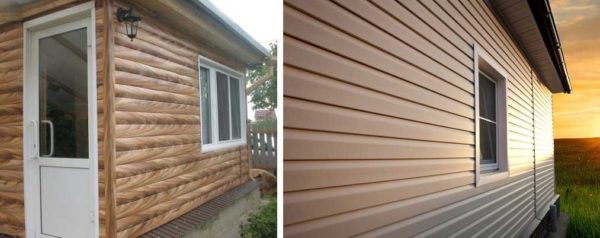
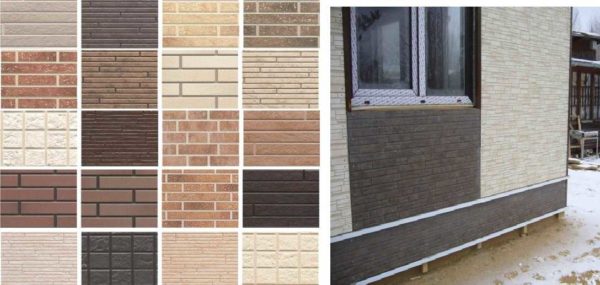

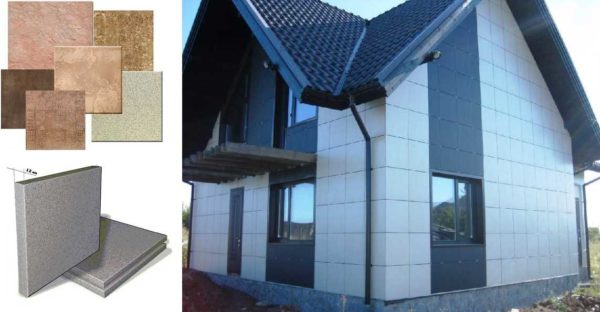
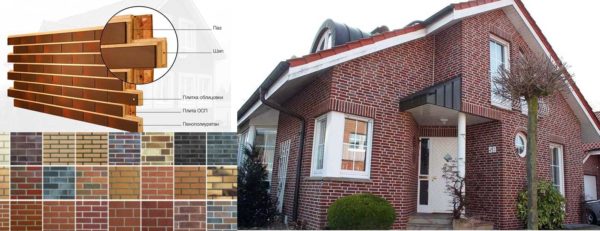
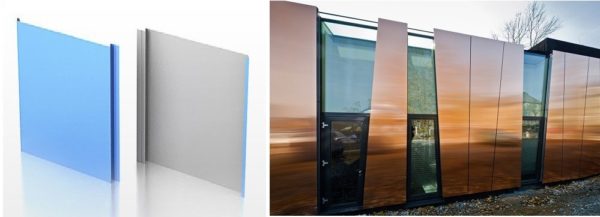
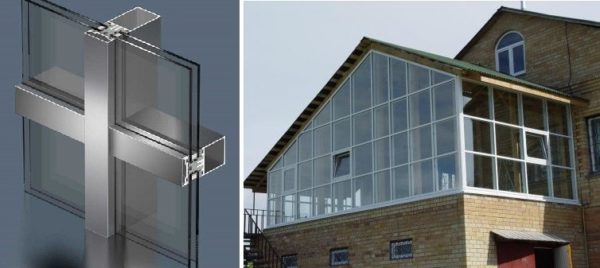
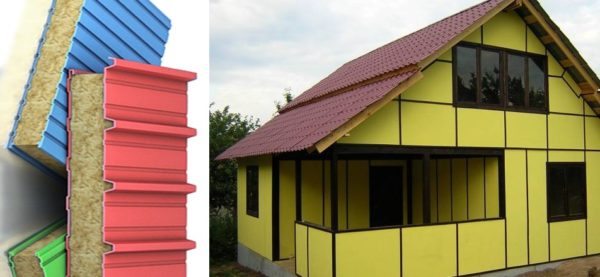

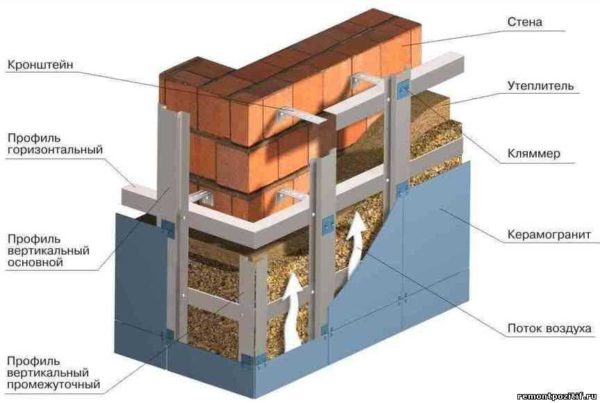
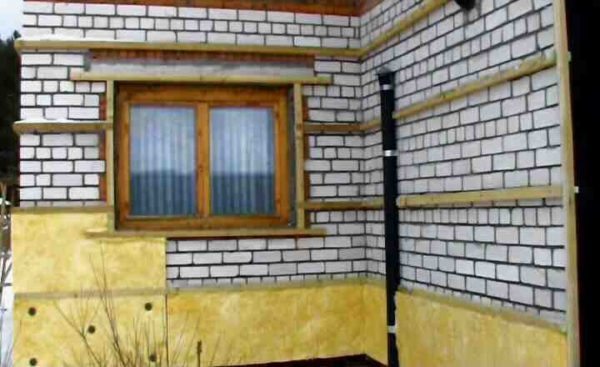
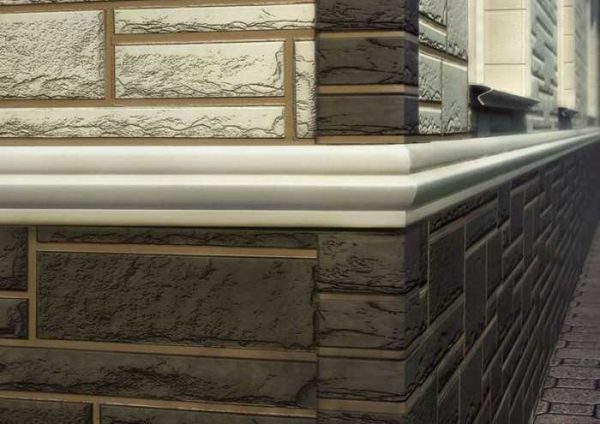

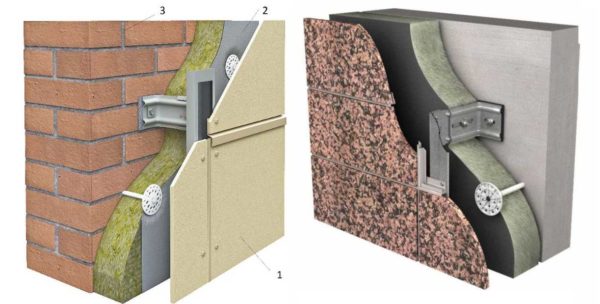
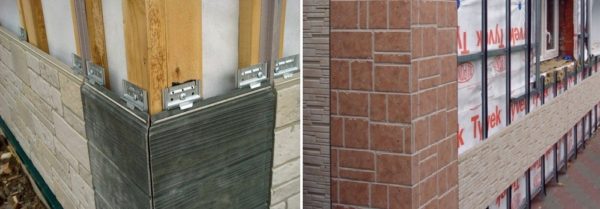
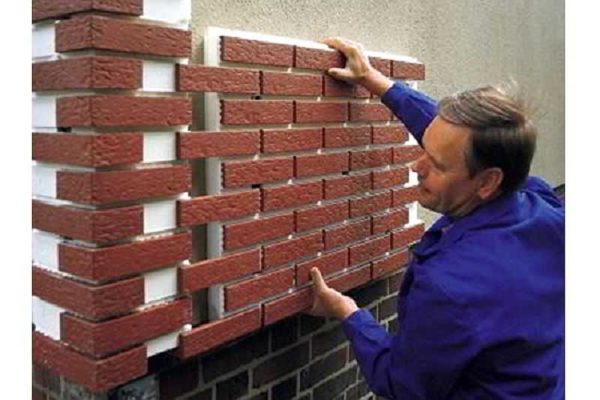
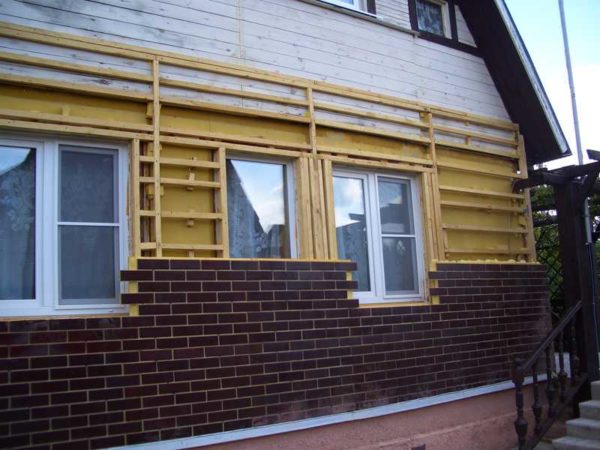
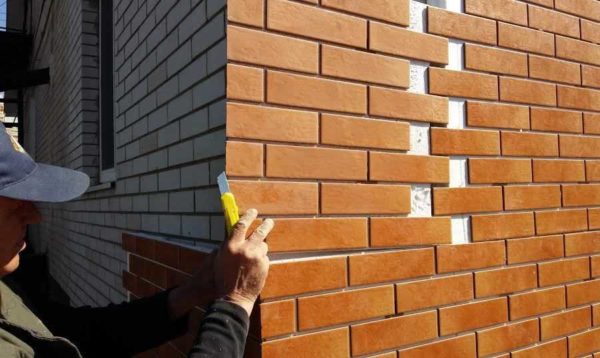
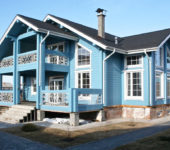

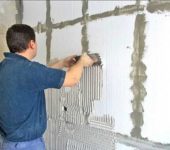
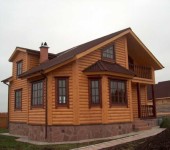
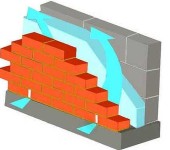





The impregnated timber looks pleasant outwardly. We ourselves bought a winter house made of timber. For its living space, the price was tempting.